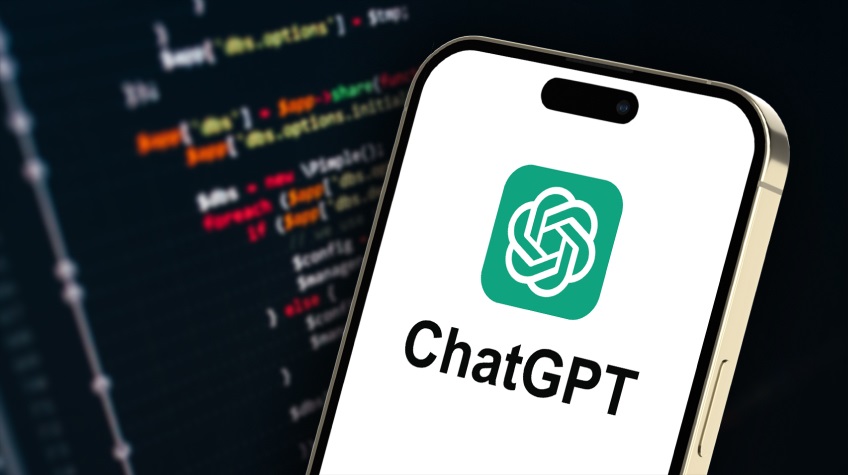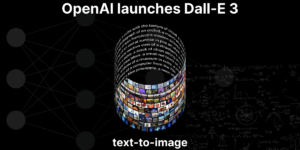
ChatGPT is one of the most used chatbot today. Launched in the year 2022, this chatbot has been making headlines since its launch. OpenAI launched it on November 30, 2022. Based on large language models, ChatGPT enables users to refine and start a conversation to the desired length, format, style, level of detail, and language.
In this post, you’ll get to know everything about ChatGPT how it came into existence and future holds for it. So, let’s get started…
OpenAI – Company that Developed ChatGPT
The company OpenAI was founded in December 2015 to accelerate the growth of artificial intelligence in the context of human-like text content creation. ChatGPT was not its first product. It launched many GPT versions that laid the foundation for the most talked about ChatGPT tool. Its GPT version has undergone plenty of evolutionary stages. Finally, it banged the entire technology world with the introduction of the ChatGPT in 2022. When its founder company launched the ChatGPT chatbot, everybody speculated about its potential across the world. Little did anyone think that it would prove itself to be a groundbreaking discovery in a relatively short span.
Let’s delve into the following paragraphs to know the evolutionary stages of artificial intelligence that gave birth to the ChatGPT.
From GPT1 to ChatGPT: A Journey of Innovations and Improvements
ChatGPT has been captivating users with its remarkable efficiencies. Its fast and widespread usage across all global industries and organizations is a testament to its revolutionary power in society. At the core of this newly launched chatbot lies the capabilities of OperaAI’s GPT-4 (large language model) capabilities. A large number of people have been utilizing the capabilities of ChatGPT across various sectors, but it is the first AI-driven chatbot tool of Open AI. Before this, OpenAI launched three GPT versions, including GPT1, GPT2, and GPT3.
GPT1 (2018): Laid the Foundation for ChatGPT
The launch of the GPT1 tool was a groundbreaking discovery in the context of Artificial Intelligence. It was the first chatbot tool of Open AI that was released in June 2018. This was a breakthrough at that time because it was equipped with remarkable capabilities of large language models. It made impossible things possible for the first time and showed the world the power of Artificial Intelligence in generating texts based on input prompts. Its best thing was that it was capable of generating a creative, cohesive, and relevant human-like text.
The technology behind GPT 1 was very unique at that time. It gained the prowess of human intelligence within a short time. Its specialty was that when the user typed a prompt in its text dialogue box, it worked magically. It hunted for the pre-existing responses based on the users’ typed keywords and then came up with a solution. In this way, it could answer questions, write short stories, and complete sentences. But, it had its limitations. If it didn’t find the answer based on the database, it could be nonsensical. This was because it lacked the understanding and inherent capabilities of the ChatGPT.
However, its development intrigued AI developers to invent the advanced stages of the GPT 1. Since then, AI developers have covered a long road to build a remarkable tool that could mimic human intelligence and human responses. However, this journey was not easy. They had to work very hard on the same thing to explore further advanced stages in the GPT series. So, read the article to know how the GPT version became the foundation for ChatGPT.
GPT 2 (2019): Harmful or Inappropriate Content
In the year 2019, OpenAI launched the GPT2 chatbot. Though the model was able to generate human-like text more efficiently, OpenAI refrained from launching the model for public usage. The respective company made this decision because it suspected that the technology of GPT 2 could be misused. It created a panic because digital crooks could use this to generate deceptive content, misleading information, and distorted data/facts. As a result, it raised a debate about its advanced technology and potential risks.
But, despite all these potential risks, AI developers researched this model to explore opportunities in it. They were amazed to see its content creation prowess and capabilities in generating text-based games. Later on, OpenAI released its small parts for public usage and research purposes. This model proved its natural language processing advancement by doing language translation and text summarization. It even aided those who were suffering from disabilities through text-speech applications.
➯ Ethical Considerations about GPT2
When Open AI launched the GPT2, many concerns were raised against the tool’s ethical efficiency. As per critics’ opinions, it could generate biased, hateful, and offensive content. This model could use the pre-existed offensive and abusive database to generate such type of content. In this way, its negative consequences could outweigh its benefits.
➯ Significant Measures Taken by the OpenAI
Initially, OpenAI restricted its usage. Later on, it equipped this model with filtering tools and other mechanisms. They could prevent the model from accessing harmful or inappropriate text or media. In this way, OpenAI tried to improve the quality of GPT2 to a great extent. But, its balanced and creative capabilities were a matter of debate. Despite the measures taken by the founder company, its wrong usage was possible to generate harmful or inappropriate content.
GPT 3: Revolutionized Human-Like Text Content Creation
Just two years before the launch of ChatGPT, the company OpenAI launched GPT3 and opened the doors to endless possibilities. Earlier, accurate human-like text creation was only a dream. But now, with the release of the GPT3, it has become possible. At that time, it became one of the best AI-generative content creation tools based on large language models. It could generate cohesive and relevant content. The best part was that it did not show the results of harmful or inappropriate content. It always created accurate and factual content whenever users enter prompts.
GPT 4: The Most Latest Bots by OpenAI
Generative Pre-trained Transformer 4 is the latest multimodal large language model developed by OpenAI. It is the latest addition to the GPT foundation models and is the successor of GPT 3. It was released to the public on March 14, 2023, and became accessible through various platforms such as the paid chatbot product ChatGPT Plus, OpenAI’s API, and the free chatbot Microsoft Copilot. This bot is said to have more advanced features compared to its predecessor models and other bots by different brands.
Also Read: Google’s Gemini AI vs GPT-4 | New AI Model is Better than OpenAI’s ChatGPT
Usages of the GPT3 Across Various Domains
Check out the following pointers to know how the GPT3 is effective:
1. Content Creation
Ever since the introduction of GPT3, users, especially writers and content creators, have had solid support; this tool has become an ideal companion for most writers and influencers. They utilize this tool to generate both video and written content, including blog posts, articles, and newsletters. They generate mesmerizing written work with the help of this chatbot. In a way, it expanded the market size of content creation to a large extent. Industries could easily enhance their brand’s visibility with the help of GPT3-generated content.
2. Language Translation
GPT 3 also helps with language translation. Often, people have command over two to three languages. Of course, having access to language translation feature helps people tremendously. GPT3 accelerated users’ career growth with its innovative feature of language translation. They could easily access multiple language translations. This helped them in accessing various educational courses or opportunities.
3. Conversational Chatbots
The introduction of GPT3 has helped many industries unleash their potential. This tool helped organizations build rapport with their customers by being connected to them even at wee hours. Moreover, this tool helped companies to provide the best solutions to their customers.
4. Proactive Medical Treatment
ChatGPT’s capabilities extend beyond writing content or translating languages, allowing it to perform a wide range of tasks. GPT3 natural language processing system played the role of a supportive companion to medical practitioners. It not only helped analyze medical reports but also provided suggestions to parents based on their medical reports. Its proactive approach detected critical illnesses at their earlier stages.
5. Environmental Aspect of GPT 3
The excellent features or benefits of GPT-3 were very expensive in the context of the environment. Training the model aggravated the issues of carbon footprint. As a result, it highlighted the need for an energy-efficient AI infrastructure that could not render the issue of carbon footprint. However, efforts were made to explore the upgraded version of the GPT3 that could provide accurate, cohesive, and relevant results. Moreover, it should be efficient in reducing carbon footprint and enhancing energy consumption.
How Successful Are ChatGPT and Other Chatbots?
If you have been thinking that this is the last stage of the ChatGPT, you are wrong. This is only the beginning of a new era in artificial intelligence chatbots. Tools like ChatGPT, Google Bard, and Gemini are more powerful than your imagination. You can use them to do much more, such as writing stories, composing lyrics, planning itineraries, and analyzing data. However, they all indeed have their limitations. All of these bots, including ChatGPT, are based on large language models and can do a lot of work for you on your behalf.
The partner company of OpenAI, i.e. Microsoft, has been claiming that Copilot will bring revolutionary change in everyone’s life. It will be everyone’s AI companion for the whole day. But does it mean that you should believe in their efficiency? Are they 100% true? Can they not show inaccurate results? The answer is both yes and no. These tools can be your companion, but you cannot solely rely on these bots. There is no doubt that their applications are extensive; however, there are chances that they fail to provide you with accurate answers for your queries. Moreover, they can be crashed. Definitely, depending on these tools for all your tasks isn’t feasible!
Finally…
So, this is all about how ChatGPT came into existence and what it can do for you. We believe that you must have understood how artificial technology underwent many stages to develop the ChatGPT in this post. Everyone has been seeing how impactful this technology has become. From the launch of GPT 1 to the ChatGPT development, it upgraded itself with each version. OpenAI’s journey has been very intriguing, leading the path to the groundbreaking technology of the ChatGPT. Now, you can interact with the AI as you interact with humans. You can ask questions from it and receive comprehensive responses in no time. This is only the beginning of the chatbot era. This technology is going to grow for sure. Many developments are already on the pipeline.
Let’s wait for more such innovations and advancements!
Thanks for reading! Stay tuned for more such insightful blog posts!






